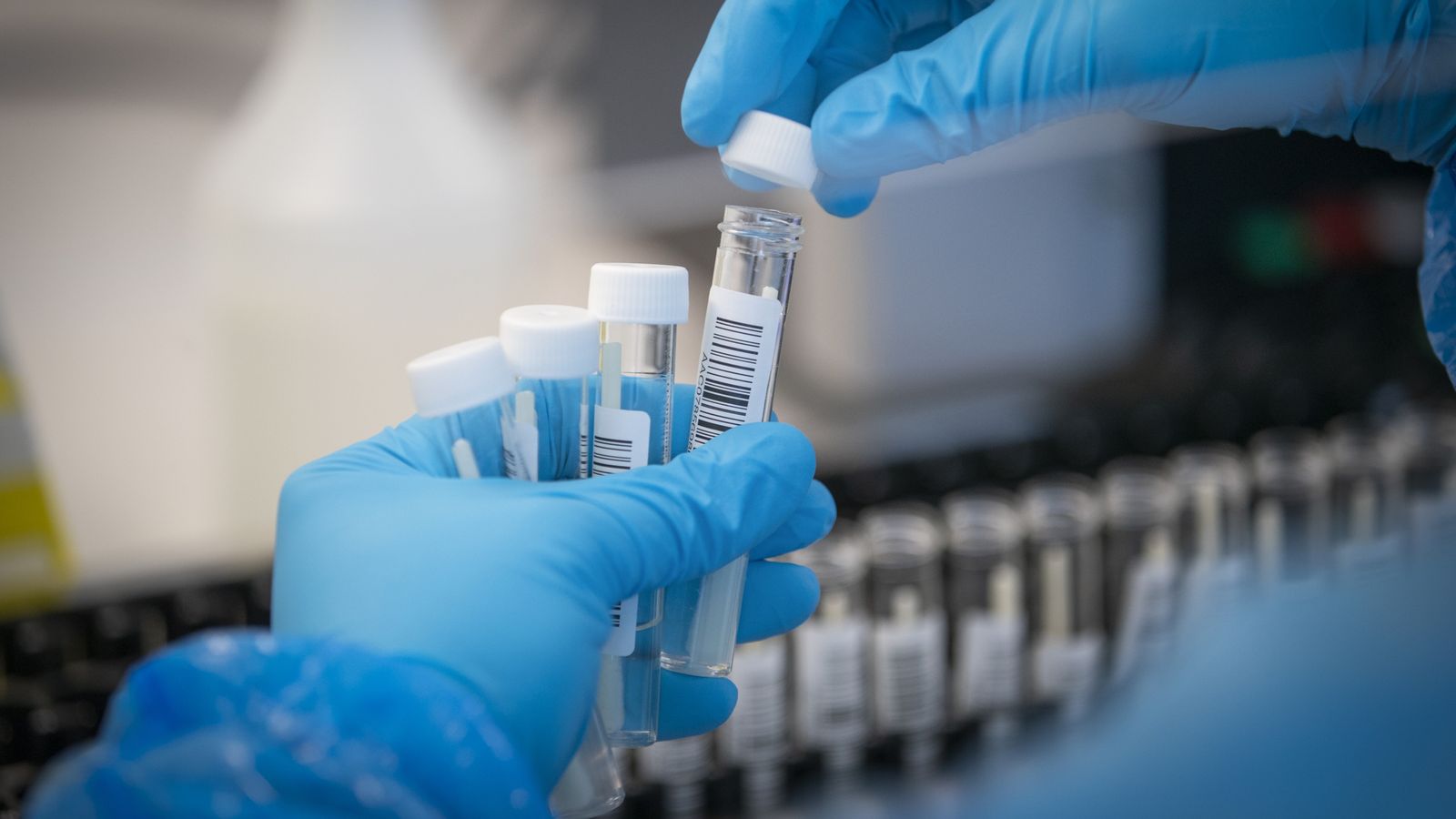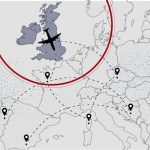No-one especially enjoys uncertainty. Yet for the next week or two, the defining feature of Omicron – the new COVID variant triggering governments around the world to impose fresh restrictions and border controls – will be uncertainty.
The coronavirus variant looks to be more transmissible than its predecessors. But how much more transmissible?
So far, we only have relatively scant data to go on. More to the point, is it more or less deadly than Delta and Alpha, the hitherto dominant variants in the UK?
Is it more or less resistant to vaccines? And does that mean resistance to transmission or that it can cause more harm to vaccinated people?
Please use Chrome browser for a more accessible video player
The answers to these questions will be enormously consequential.
Alongside related questions (for instance, do we need redesigned vaccines and if so how long will they take to get designed, manufactured and distributed?) they will determine whether the coming months are miserable ones for all of us – a return to widespread restrictions – or whether Omicron passes more gently than previous waves of the virus.
COVID-19: Omicron variant is a ’cause for concern, not for panic’, says US President Joe Biden
COVID-19: MPs to debate and vote on new restrictions on Tuesday after cases of Omicron variant identified in the UK
COVID-19: Travel firms update rebooking and refund policies after restrictions tightened
It’s worth noting, by the way, that while many people’s natural tendency – especially given how much of the news associated with COVID has been so frightful – is to leap for worst-case scenarios, it’s not entirely inconceivable that Omicron is actually better news than many suspect.
If it is more transmissible but also considerably milder than previous strains like Delta (and this is often the way viruses evolve over time; maximising transmission often entails reducing virulence) then this new variant could be something to cheer rather than fear.
But we don’t know. We just don’t know. Most of what we have to go on so far is anecdotal. We don’t have enough numbers yet. And that matters.
Institutions like the media, and for that matter policymakers and investors, struggle with that kind of uncertainty.
“No-one knows what’s happening!” doesn’t make for an especially compelling front page headline, which is part of the explanation for why there are so many hot takes around at the moment.
Follow the Daily podcast on Apple Podcasts, Google Podcasts, Spotify, Spreaker
But our ignorance of what we’re faced with is profound. Consider that first facet of Omicron: the fact that it’s probably more transmissible than its predecessors.
Unlike most of the other questions above we have a little bit of data on this, as South Africa, where Omicron was first detected, is one of the more advanced and transparent countries in the world when it comes to sequencing the genome of the virus and its variants.
Look at a chart of that data and the new variant certainly looks pretty terrifying. In the space of four weeks up until the middle of November it went from accounting for 0% of sequenced viruses sampled by the South African authorities to 86%.
Consider: within four weeks of first being detected, Delta was only at 4% of South African samples and Beta (the one we previously called the South African variant) was still bouncing around at 0%.
But even here there are lots of caveats. First, the comparative speed of spread depends enormously on what you consider to be day one of a new variant.
If day one is the moment it first surpasses 1% of all sequenced cases then Omicron looks utterly terrifying compared with Beta and Delta.
If you start the lines from the moment a variant surpasses 5% of all sequenced cases then it looks steeper than the other two variants, but not by anything like the same margin.
And given the spread of COVID depends on all sorts of mysterious things like super spreader events, you could make a case for either threshold.
Please use Chrome browser for a more accessible video player
The second caveat is that the South African data everyone’s looking towards as evidence of high transmission comes from a very small sample base.
Look at the number of total samples of Omicron we’re basing this off and you’re talking about 100 or so.
Given the authorities in South Africa were sampling more than 1,000 Delta cases a fortnight earlier this summer, 100 constitutes a very small sample pool.
Now, even with all these caveats it certainly looks, at least from this data, that the variant spreads quickly. But you see the point: for the time being, the data is scant.
That will change in the coming days. But it means we’re in for a bumpy ride as we learn in real-time some of the answers to those all-important questions above.






















